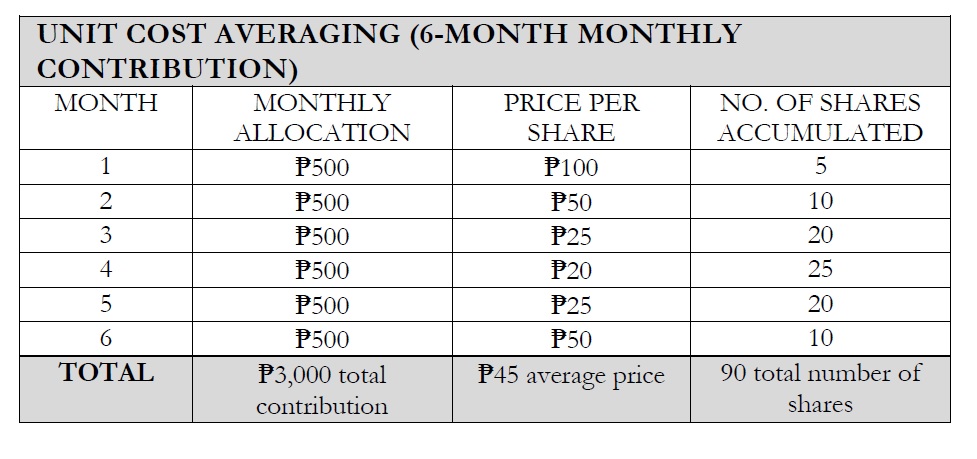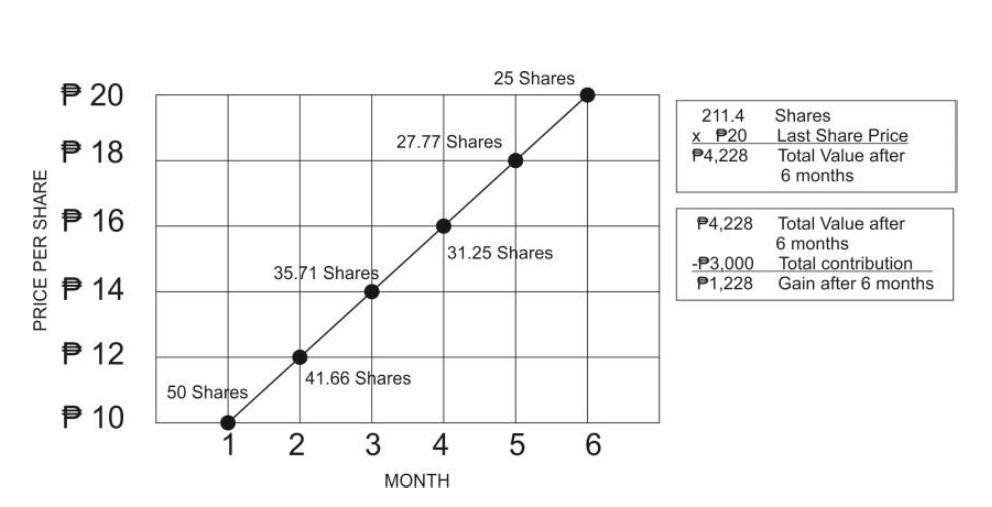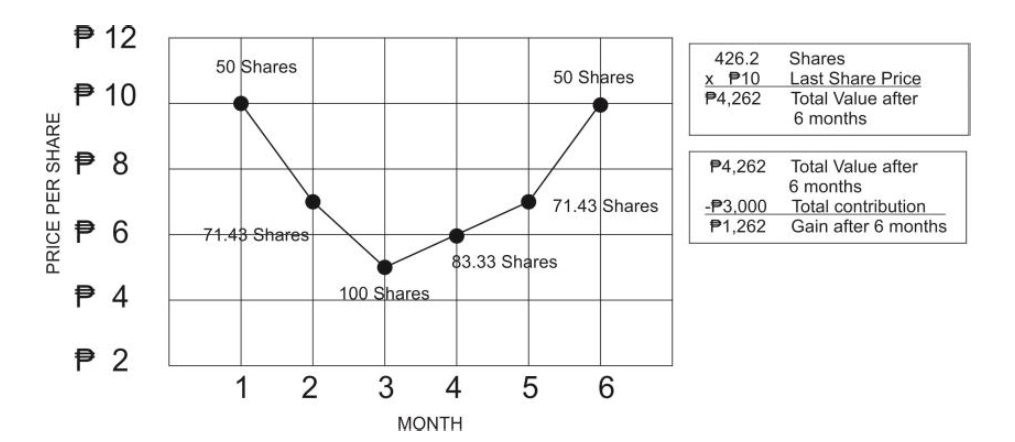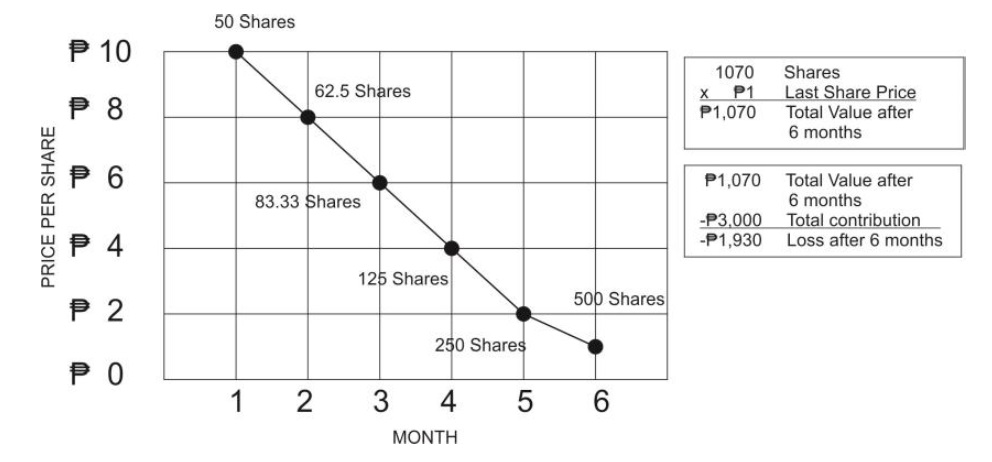WHAT IS PESO-COST AVERAGING?
When you are investing regularly (e.g. monthly) and for a long term (e.g. 10 years), you are benefiting from Unit-Cost Averaging (Peso-Cost or Dollar-Cost Averaging, depending on your investment currency).
This is an investor’s tool use to build savings and wealth regularly over a long period. It is a way to neutralize short-term volatility in the market that will allow you to hopefully gain better returns by reducing your exposure to price fluctuations of the security being purchased.
LET’S HAVE AN EXAMPLE
To illustrate, let us just say you have allocated for a specific goal ₱500 on monthly basis for 10 years. This ₱500 will be used to purchase an investment instrument of your choice. We will use equity/stock as an example.
In the first month, the share price of a certain stock of your choice is at ₱100. With your monthly allocation of ₱500, you can buy 5 shares. The next month, the share price went down ₱50, consequently allowing you to buy 10 shares. The third month followed with a share price of ₱25. You started to get worried because those shares you purchased two months ago were at ₱100 and last month was ₱50, and now if you are going to sell those shares, you would end up losing since the current price is now at ₱25. Since you want to stay committed to your goal and not be shaken by price fluctuation, you continue buying shares with your monthly allocation of ₱500 no matter what price the market offers. For the next succeeding months, the price went down to ₱20 and went back to ₱50 in the sixth month. The table below provides a summary of your purchases and the shares you have acquired for six months.
With your ₱3,000 total contribution, you were able to purchase 90 shares of the stock. If you are going to sell all your shares on the sixth month at the current price of ₱50 per share, you will get ₱4,500 with a net profit of ₱1,500 even if the share price went down from ₱100 to ₱50!
You were earning when the price went down; so how about when the price goes up? Will you still be earning? Here’s the scenario.
Assuming in the first month, the price per share is ₱10, your ₱500 monthly allocation can buy 50 shares. If the price goes up by ₱2 every month, up to the sixth month, you can buy a total number of 211.4 shares with your ₱3,000. If the shares are sold at the current price of ₱20, you will have ₱4,228 total value with a net earning of ₱1,228.
Similarly, with other scenarios.
WEAKNESS OF PESO-COST AVERAGING
No matter how the market fluctuates, you will still be earning along the way. The keyword here is fluctuation. The weakness of peso-cost averaging is when the share price never goes up but goes all the way down, as illustrated below. In this scenario, you would end up losing your money.
This is the reason why peso-cost averaging works best on a longer time horizon, at least 10 years or more. Though I have used a 6-month time frame as an example, in a real market sense, an equity’s price may only have a minimal change every month but considerable differences can be observed on an annual basis. Besides, the price may go straight down for months, but will most likely recover in the following years. Therefore, peso-cost averaging will not likely give you an advantage in a shorter investment horizon.
Also, when doing the unit-cost averaging strategy, make sure that you have chosen a fundamentally sound fund and/or company to invest in to lower the risk of bankruptcy or fund closure.
Now, the next question is this,
If you have a lump-sum money, would you be better off investing it immediately or use peso-cost averaging strategy?
To answer this, let me quote from this study conducted by Vanguard about Dollar-Cost Averaging (DCA),
“We conclude that if an investor expects such trends to continue, is satisfied with his or her target asset allocation, and is comfortable with the risk/return characteristics of each strategy, the prudent action is investing the lump sum immediately to gain exposure to the markets as soon as possible. But if the investor is primarily concerned with minimizing downside risk and potential feelings of regret (resulting fromlump-sum investing immediately before a market downturn), then DCA may be of use. Of course, any emotionally based concerns should be weighed carefully against both (1) the lower expected long-run returns of cash compared with stocks and bonds, and (2) the fact that delaying investment is itself a form of market-timing, something few investors succeed at.”
Based on Vanguard’s study, if an individual has a lump-sum money readily available, then the person will benefit from investing it immediately. However, for those who don’t have such amount but are saving on a regular basis, then the peso-cost averaging will surely help.








